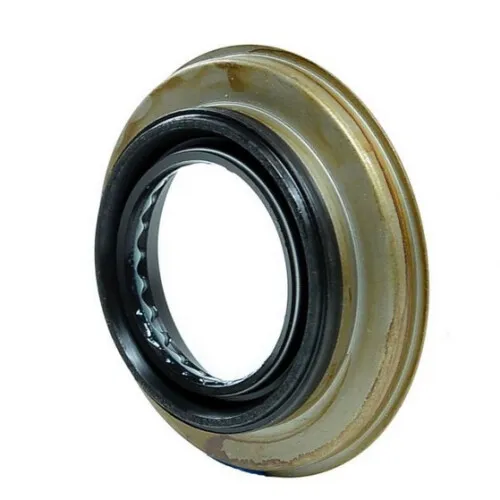transmission axle seal
Understanding Transmission Axle Seals Functions, Types, and Maintenance
Transmission axle seals play a crucial role in the performance and longevity of a vehicle's drivetrain system. These seals, often overlooked during routine maintenance, are vital components that prevent fluid leaks, protect against contaminants, and ensure the efficient operation of the transmission and axle assemblies. This article aims to provide an in-depth understanding of transmission axle seals, including their functions, types, potential issues, and maintenance practices.
Functions of Transmission Axle Seals
At their core, transmission axle seals serve several essential functions
1. Fluid Containment The primary purpose of an axle seal is to contain the lubricating fluid within the transmission and axle systems. This fluid is necessary for reducing friction and wear on moving parts. Without effective seals, these fluids can leak out, leading to inadequate lubrication, overheating, and eventual system failure.
2. Contaminant Protection In addition to retaining lubricants, axle seals also prevent dirt, dust, and moisture from entering the transmission and axle. Contaminants can cause significant damage to internal components, accelerating wear and potentially leading to catastrophic failure.
3. Pressure Maintenance Seals help maintain the necessary pressure within the transmission and axle systems. Proper pressure is crucial for optimal performance and efficiency.
Types of Transmission Axle Seals
There are several types of transmission axle seals, each designed for specific applications and environments. The most common types include
1. Rubber Seals These are the most widely used seals due to their flexibility and durability. Rubber seals can withstand a range of temperatures and offer good resistance to the chemicals found in transmission fluids.
2. Metal Seals Sometimes used in high-performance applications, metal seals provide superior strength and resistance to heat. They are often found in racing or heavy-duty vehicles where extreme conditions are prevalent.
3. Composite Seals These seals combine materials to leverage the advantages of each. For instance, a composite seal may have a metal outer layer for strength and a rubber inner layer for flexibility.
4. Lip Seals Lip seals have a specially designed lip that creates a better barrier against fluid leakage. They are particularly effective in applications with rotating shafts.
Common Issues with Axle Seals
transmission axle seal

Despite their importance, transmission axle seals can suffer from wear and damage over time
. Several common issues can affect their integrity1. Wear and Tear Regular use and exposure to varying temperature conditions can lead to the breakdown of the material. This is particularly common in rubber seals.
2. Improper Installation If seals are not installed correctly, they can become pinched or misaligned, leading to premature failure.
3. Fluid Contamination If the transmission fluid becomes contaminated, it can break down the seal material, reducing its effectiveness and leading to leaks.
4. Extreme Temperatures High heat generated by the drivetrain can cause seals to become brittle or warp, while extreme cold can cause them to lose flexibility.
Maintenance of Transmission Axle Seals
To ensure the longevity and effectiveness of transmission axle seals, regular maintenance is essential. Here are some key practices
1. Regular Inspections During routine vehicle maintenance, check for any signs of leakage or deterioration around the axle seal area. Early detection of issues can prevent more severe damage.
2. Fluid Changes Regularly change the transmission fluid according to the manufacturer’s recommendations. This helps keep the fluid clean and reduces the wear on seals.
3. Correct Installation If replacing axle seals, ensure proper installation. Follow manufacturer guidelines and use the appropriate tools to avoid damaging the new seals.
4. Monitor Vehicle Performance Pay attention to any changes in vehicle performance, such as unusual noises or slipping gears, as these could indicate issues related to the axle seals.
Conclusion
Transmission axle seals are essential components that greatly influence the performance and reliability of a vehicle's drivetrain. Understanding their functions, types, and potential issues can help vehicle owners maintain their vehicles more effectively. By prioritizing regular inspections and maintenance, drivers can ensure that their transmission systems operate smoothly, extending the life of their vehicle and enhancing overall performance. Neglecting these small but significant parts can lead to costly repairs, making it all the more crucial to give them the attention they deserve.
-
Cassette Seal: Integrated Solutions for Heavy Duty
News Aug.29,2025
-
Premium Automotive Oil Seals Suppliers | Durable & Precision
News Aug.28,2025
-
Oil Drain Plug Washer Reusable Types
News Aug.22,2025
-
Oil Drain Plug Replacement Guide
News Aug.22,2025
-
Heavy Duty Seal Waterproof Features
News Aug.22,2025
-
Engine Oil Seals Installation Guide
News Aug.22,2025
-
Seal Oil for Sale High Temperature Grade
News Aug.22,2025
Products categories















